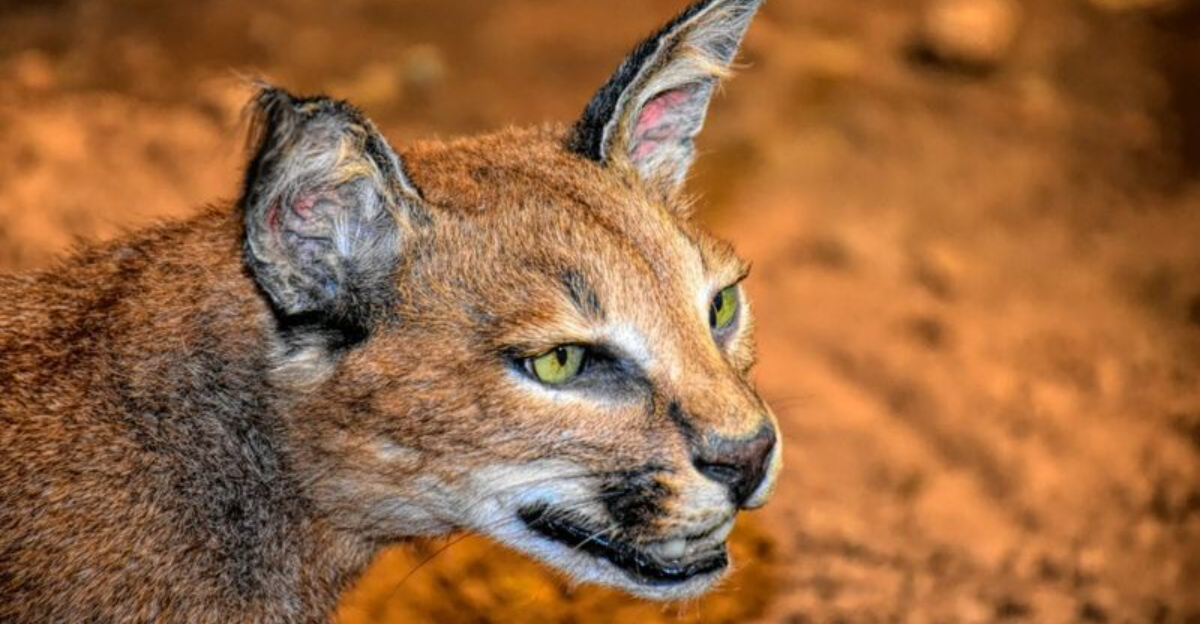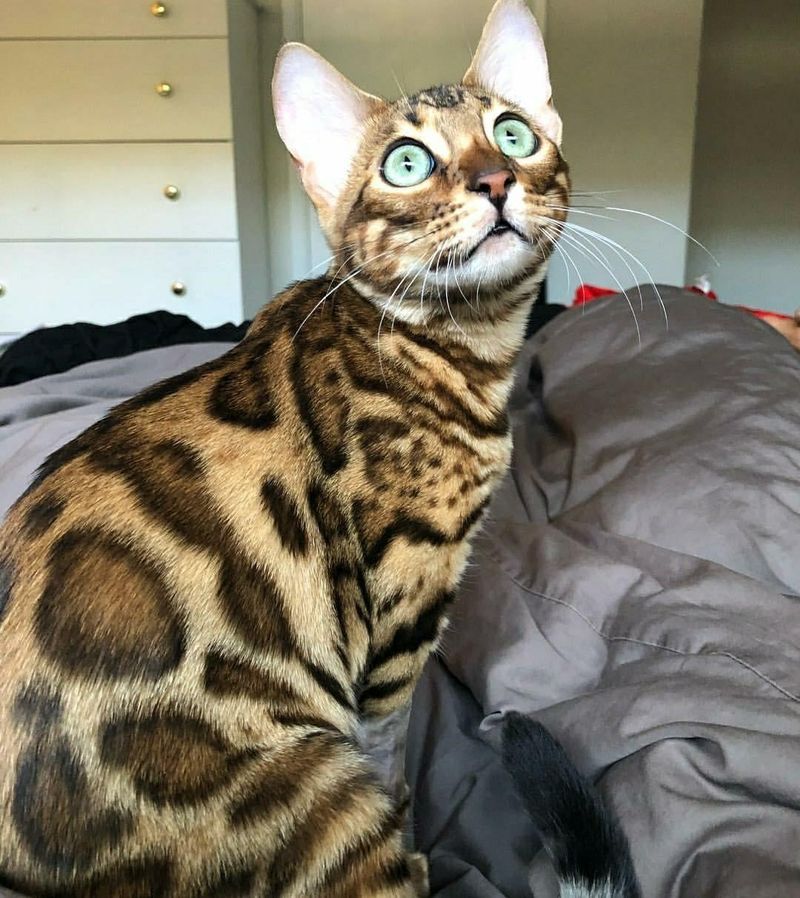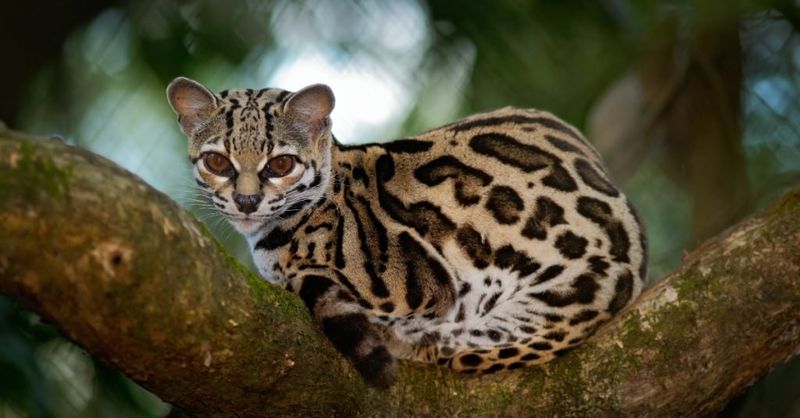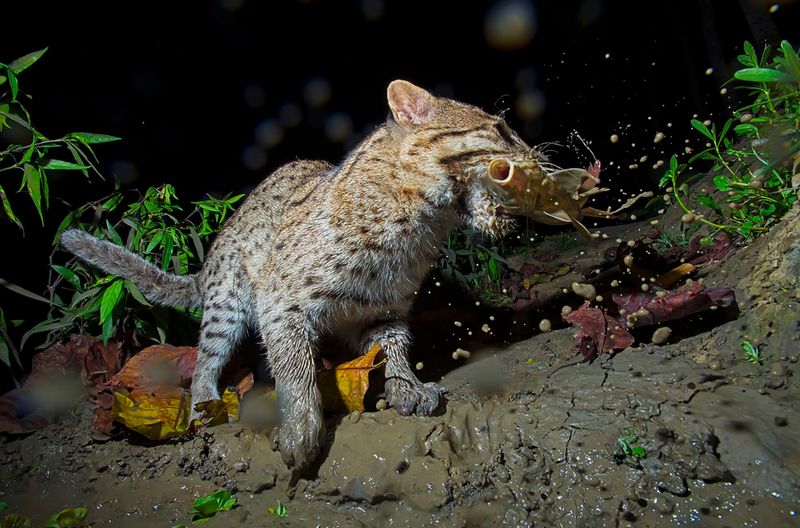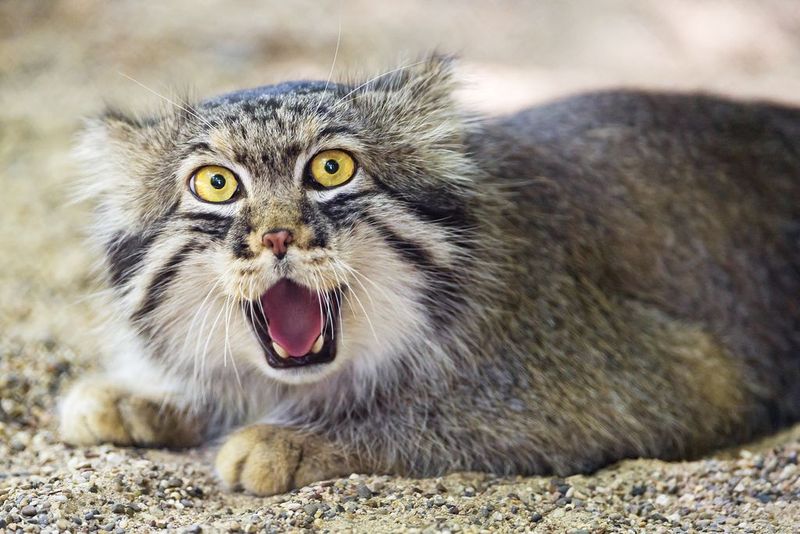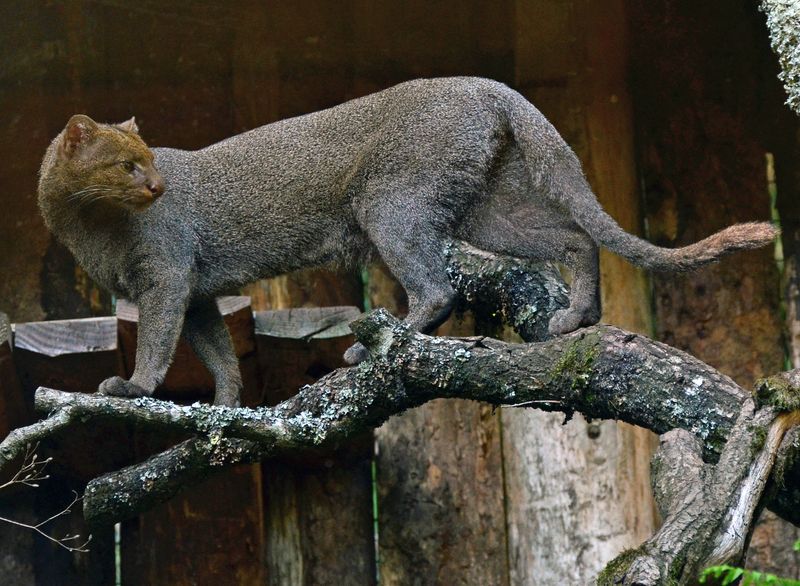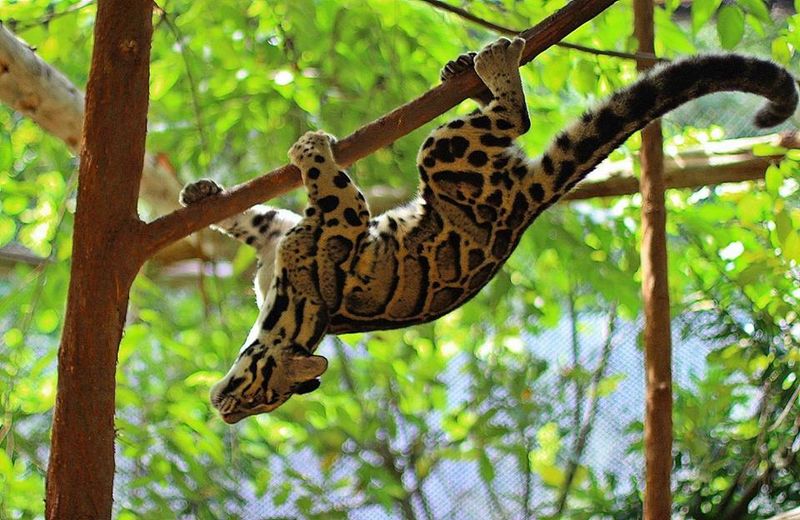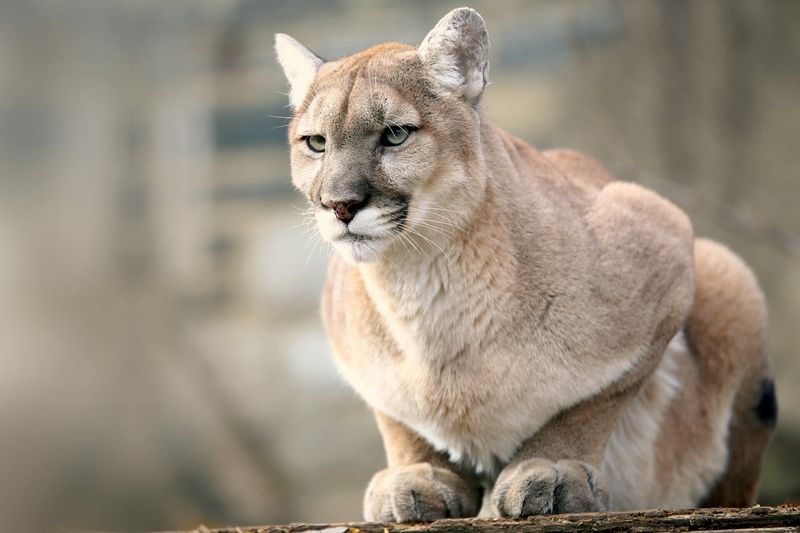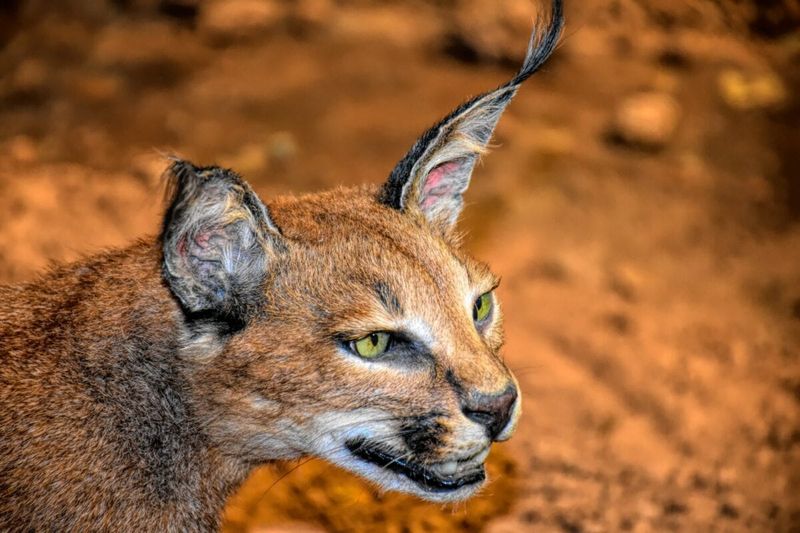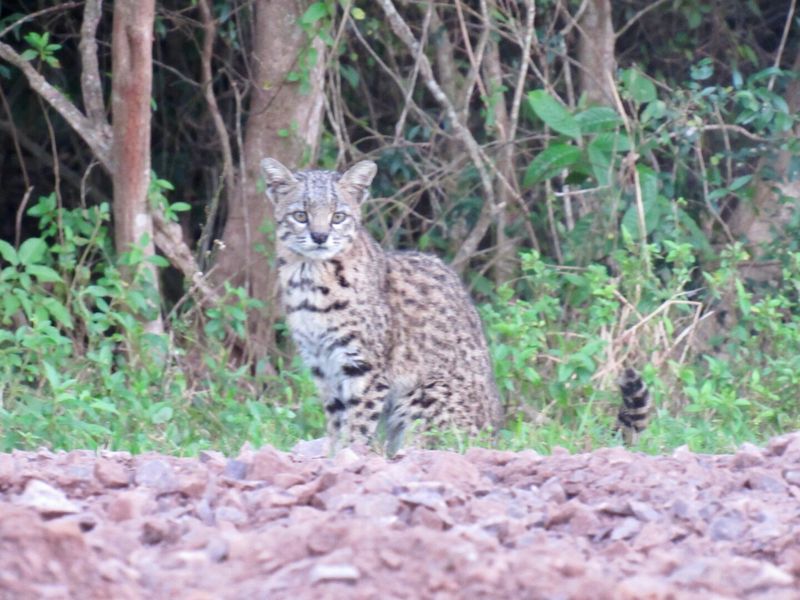📖 Table of Content:
Ever wonder if your house cat has more in common with lions and tigers than just being in the same family? While wild cats might seem worlds apart from our domestic feline friends, they actually share many surprising behaviors and traits. From similar grooming habits to playful antics, these wild relatives display characteristics you might recognize from your own furry companion.
1. Ocelot
Ocelots love water, unlike the stereotype that cats hate getting wet. Many domestic cats actually enjoy playing with water or watching it flow from taps, showing this trait isn’t so wild after all.
These spotted beauties groom themselves meticulously, spending hours licking their fur clean – exactly like your house cat does on your favorite chair. They’re also nocturnal hunters who sleep most of the day away.
Ocelots communicate through meows, purrs, and hisses that would sound familiar to any cat owner. When feeling playful, they’ll pounce on objects and bat them around, mirroring how your kitty attacks toy mice.
2. Serval
Much like your pet cat, Servals knead with their front paws when they’re at ease. This instinctive behavior starts during nursing as kittens and remains a lifelong expression of comfort and security.
Standing at about 24 inches tall, these African cats have incredibly expressive ears that swivel independently to catch sounds. Your domestic cat’s ears work the same way, though less dramatically.
Watching a serval hunt is like seeing your house cat in action but supercharged. They leap up to 12 feet in the air to catch birds and pounce with precision on ground prey, using the same stalking techniques as domestic cats.
3. Margay
Thanks to ankles that rotate 180 degrees, Margays can climb down trees headfirst—a rare feline skill. Your domestic cat might not manage that, but it shares the same agile climbing instincts and impressive coordination.
These South American felines enjoy playing with objects, batting them around with their paws and chasing them – behavior identical to how your kitty interacts with toys. Their playfulness extends throughout their lives, not just during kittenhood.
Margays mark territory using scent glands and urine, a behavior that explains why unneutered house cats spray furniture. Both species also use scratching to leave visual markers and maintain their claws.
4. Fishing Cat
Unlike most felines, fishing cats actively seek out water. They dive fully underwater to catch prey, aided by webbed paws built for swimming. Your house cat might steer clear of a tub, but its fascination with dripping taps and fish tanks says the instinct is still there.
Both fishing cats and domestic cats share the habit of sitting perfectly still while watching prey. Their whiskers help detect the slightest movements, allowing for precise hunting.
Food storage is another shared trait. Fishing cats sometimes hide portions of their catch for later, similar to how some house cats attempt to “bury” food in imaginary dirt by pawing at the floor around their dishes.
5. Pallas’s Cat
Pallas’s cats have the most expressive faces in the wild cat world. Their round pupils (unlike other wild cats’ vertical slits) give them an eternally surprised look that resembles domestic cats when they’re in playful mode.
These fluffy mountain dwellers are masters of the slow-motion stalk. They freeze mid-step when hunting, a behavior your house cat displays when approaching toys or unsuspecting ankles.
Both species share an adorable grooming quirk – they often stop mid-lick with their tongue still sticking out, appearing momentarily confused. Pallas’s cats also love lounging in sunbeams and finding elevated perches to survey their domain, just like your window-sill loving companion.
6. Jaguarundi
Active by day instead of night, jaguarundis share a surprising trait with house cats that often nap at night and play in the sun. Their weasel-shaped bodies and otter-like faces may seem odd, but their behavior feels right at home.
These vocal cats communicate with 13 different sounds, including purrs, whistles, and chirps. Your house cat’s trills when spotting birds through windows mirror this diverse vocabulary.
Both jaguarundis and domestic cats show curiosity about new objects in their environment. They’ll approach cautiously, sniff thoroughly, and possibly bat at interesting items – explaining why your cat investigates shopping bags with such intense focus.
7. Clouded Leopard
Despite their impressive saber-like canines, clouded leopards don’t roar—they purr, just like your house cat. This surprising fact ties them more closely to our pets than to their roaring cousins in the wild.
These tree-dwelling cats can hang upside-down from branches using their powerful tails for balance. While your house cat’s acrobatics might be less extreme, they share the same core flexibility and love of climbing.
Both species engage in “self-anointing” behavior, rubbing their faces against objects to mark them with scent. When your cat rubs against your legs or furniture, they’re doing exactly what clouded leopards do to claim territory in Asian forests.
8. Puma
Pumas can’t roar like lions or tigers – instead, they purr, chirp, and meow just like domestic cats! When content, they produce the same soothing rumble your lap cat does during petting sessions.
These powerful predators spend significant time grooming, using their rough tongues to clean every inch of fur. The characteristic leg-in-the-air position during bathing is identical to your house cat’s flexible cleaning routine.
Baby pumas play constantly, practicing hunting skills through pouncing, chasing, and wrestling with siblings. This mirrors kitten behavior perfectly, explaining why your adult cat still enjoys ambushing toy mice. Both species also knead with their paws when comfortable, a behavior that starts in infancy.
9. Caracal
Those striking black tufts on a Caracal’s ears aren’t just for show—they aid in sound detection. Though your house cat’s ears are more modest, they share the same skill: rotating to zero in on even the faintest noise.
These medium-sized cats are legendary jumpers, leaping up to 12 feet high to catch birds mid-flight. Your domestic cat displays the same vertical jumping technique when attacking feather toys, just on a smaller scale.
Both caracals and house cats engage in play-fighting that looks aggressive but rarely causes injury. This social behavior helps young cats develop hunting skills and establish hierarchy. When caracals are content, they close their eyes halfway and slowly blink – the same “cat kiss” your pet gives you.
10. Geoffroy’s Cat
By using urine and facial gland secretions, Geoffroy’s cats leave scent messages to mark their territory. When your house cat rubs its cheeks on the sofa or doorway, it’s doing the same thing—claiming space, just like its wild relatives.
These small spotted cats from South America carry food to safe locations before eating, just as domestic cats sometimes drag toys or treats to favorite spots. Both species also bury waste products, an instinctive behavior to hide evidence from predators or competitors.
Female Geoffroy’s cats purr to their kittens, encouraging nursing and bonding. Mother house cats use identical vocalizations with their offspring. Both species also groom their young meticulously, teaching them proper cleaning techniques through demonstration.
